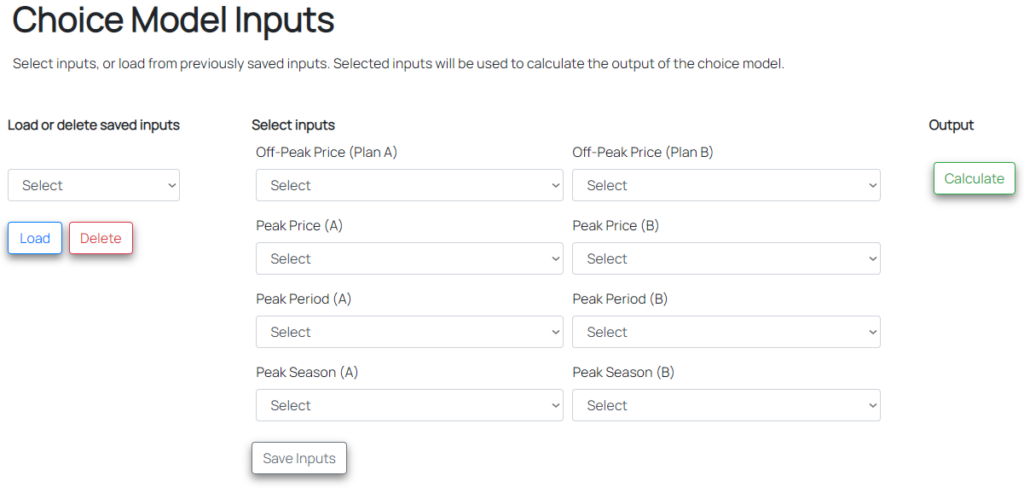The results of economic studies are most useful when they are incorporated into tools that allow assessing their implications. Veritas staff produce software that allow users to conduct different sorts of “what if” scenarios to support their efforts. These include software with graphic user interfaces and plug-in code with specialized algorithms.
Electricity Service Plan Modeling Software
Veritas produced a model built for end users that evaluates customers’ preferences for new electricity service plans including time varying rates and estimates the potential market size of alternative electricity service plans (e.g., Time of Use and Fixed Bill plans) in 10 individual service territories throughout the country (Neenan, Kinnell, and Bingham 2016).
The user can review results for each plan rates, plan rates by market segment, or plan rates by demographic group. The user can also evaluate market size of each rate, market size by market segment, or market size by demographic group. Finally, the Market Size Model can also evaluate customers willingness to switch ESPs by demographic group. This allows the user to evaluate how many customers are likely to choose particular ESP offerings in a service territory based on the ESP’s characteristics (e.g., on-peak price and the timing of the on-peak period) and the customers characteristics (e.g., gender, age, and race). It also allows the user to evaluate how many more or fewer customers may choose a specified ESP as each of its attributes are varied (e.g., raising the on-peak price by $0.05). The user can also evaluate how many customers of different types (e.g., market segments or demographics) are likely to choose a specific ESP (e.g., the software allows the user to evaluate how Green versus Not Green customers are likely to react to and choose different ESPs).
Try a demo of the ESPM model (Demo only includes Tennessee)

Electric Car Dynamic Adoption Model
Veritas developed the personal transportation/electric vehicle penetration module of the Electric Power Research Institute’s (EPRI) REGEN macroeconomic model. The Transportation Module consists of an integrated set of equations and data that connect to the REGEN macroeconomic model. These equations and data are brought together to characterize vehicle purchases, driving behaviors, fuel consumption and emissions. The structural economic model can be calibrated to generate a realistic and internally consistent representation of baseline personal transportation conditions into the far future (decades). The module is partial equilibrium; counterfactual experiments can be conducted by specifying conditions that are different from baseline and running the model. Electric vehicle adoption is modeled using econometric equations in a system dynamic framework. The model consists of computational algorithms programmed in Analytica that interface and dynamically solve in a general equilibrium model programmed in GAMS.
